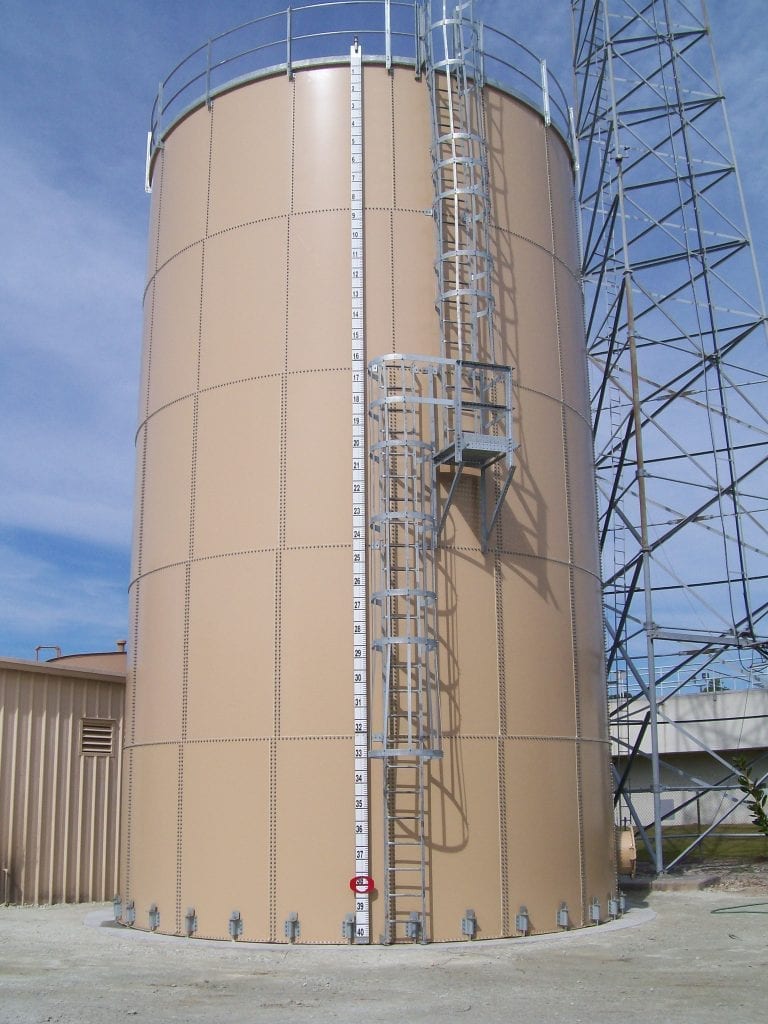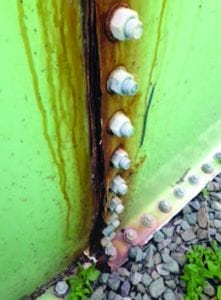Published in the November 2016 Issue of FPC Magazine
Keys to keep your fire suppression storage systems in-service with long-life, operating safely, and ready to perform when it counts.

CST, Kansas City, Missouri, is a storage tank manufacturer with roots dating back to 1893 that has been supplying tanks for decades for fire protection systems at varied sites like distribution warehouses, military bases, retail stores, power plants, oil refineries, manufacturing plants, industrial parks, hospitals, and schools, to name just a few.
CST, while manufacturing new storage tanks, also works with owners, operators, and contractors to drive home the importance of staying ahead of the curve with their fire-safety systems, which, of course, includes existing storage tanks.
Whether a system is operating in a public or private sector, it is mission-critical for protecting facilities and, certainly, its occupants and visitors. Through a robust and regular inspection process by qualified professionals, property owners can ensure their suppression systems will perform as designed to detect fires immediately, activate early-warning alarms, and ultimately extinguishing active fires.
NFPA 25 Inspection, Testing and Maintenance of Water-Based FP Systems provides the guidelines to help owners, and the property managers working on behalf of owners, clearly understand when an “in-house” inspection is adequate or when it is prudent to reach out to specialized fire protection contractors and inspection service experts.
Storage tanks that supply and support a fire suppression system are a major part of that equation. In some cases, a limited or non-existent inspection and preventative maintenance program may not adequately identify issues that might be fairly manageable if corrected early-on. If left unattended or not monitored appropriately, a sub-standard inspection program can lead to diminished life-span of the tank(s) and may result in issues that require taking tanks off-line for extended periods of time for substantial repair, and could, ultimately, require premature replacement with a new tank. Certainly, tanks have a life span like any other equipment, but attention to detail can maintain the integrity of the asset and maximize the years of service.
Typically, a professional inspection service can identify issues with existing systems, and can also identify areas that might be non-compliant or not optimum design-wise vs. only reviewing what is already in-place. Suggestions on how to improve the system can then be discussed.
“A complete inspection of your storage tank should take many things into consideration and not just the storage tank only,” explains Tom DeDonder, VP of Construction Services of CST. “While the condition of the hardware, gasket, welds, and the integrity of the coating and structural components are of critical importance, there are many items like relief vents, nozzles, anchors, the foundation, insulation, heaters, etc., that are vital for the tank to operate safely. So, it’s imperative to identify issues early-on before they develop into a problem.”
“The integrity of handrails, rungs, swing-gates, cages, or step-off areas can be compromised without proper maintenance by the owner/operator, and these should be dealt with immediately to keep your operators and facility personnel safe and prevent lost-time incidents. Items like ladders, platforms, and walkways can be among the most critical ‘non-storage’ life-safety components of any tank.”
“When it is time for a full inspection of the tank, you really should consider utilizing a company that has many years of experience building tanks and supporting customers in the fire suppression market,” DeDonder adds. “Tanks that have been in service for many years might not have had the proper attention, but a good inspector can identify potential issues and not only look at the tank component that is right in front of them, but also anticipate how it may affect the entire FP system in the future.”

DeDonder went on to detail that it is critical to maintain the records of the inspection and maintenance program, so an owner/operator can plan for the required NFPA inspections with the least impact on their facility as possible.
“There is no convenient time for inspections with any equipment,” he says, “but the inconvenience is certainly much greater when you have a systems-failure and an unplanned shut-down, or even a forced outage by a fire marshall or other compliance officer. The key is to plan ahead!”
CST was a pioneer in storage tanks beginning in 1893 (as Columbian Steel Tank). CST was the first to apply glass-fused-to-steel enameling technology to tanks in the 1940s (as A. O. Smith) and was one of the first to factory-coat tanks with epoxy in 1978 (as Columbian TecTank). CST tanks meet or exceed NFPA, FM, USACOE, and many other industry standards. CST offers full NFPA tank inspection and repair services as well.
CST has over 250,000 storage tanks deployed worldwide in over 125 countries storing a variety of liquid and dry products.
CST Contact Information:
CST Industries, Inc.
Tom DeDonder
VP of Construction Services
615-466-5220
tdedonder@cstindustries.com
CST Industries, Inc.
844-44-TANKS
sales@cstindustries.com

